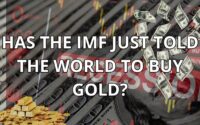Inflation may have peaked… Or maybe not: Morning Brief
This article first appeared in the Morning Brief. Get the Morning Brief sent directly to your inbox every Monday to Friday by 6:30 a.m. ET. Subscribe
Wednesday, April 13, 2022
Today’s newsletter is by Brian Cheung, an anchor and reporter covering the Fed, economics, and banking for Yahoo Finance. You can follow him on Twitter @bcheungz.
Prices continued to rise in the United States in the month of March, jumping 8.5% compared to March 2021. That pace was the fastest seen since 1981 (when Olivia Newton-John’s “Physical” was topping the Billboard charts).
The question: Can we get much higher?
Some economists say that despite the headline number, there are signs within the Consumer Price Index that show inflation may have peaked.
Unless, of course, it didn’t.
“I see this as near-top,” S&P Global Ratings Chief U.S. economist Beth Ann Bovino told Yahoo Finance after the report on Tuesday.
Hopefully it did peak
The major driver of higher inflation in March was higher energy costs. Sanctions on Russia after Vladimir Putin’s invasion of Ukraine effectively disconnected Russian oil supply from the global economy.
Between February and March, gasoline prices rose 18.3% nationally as fuel oil costs jumped 22.3%. That bled into other categories that rely on gas or oil; airline fares rose 10.7% and car and truck rentals increased 11.7%.
At the Federal Reserve, officials appear to be bringing a glass-half-full perspective to the high inflation reading.
Fed Governor Lael Brainard (who, by the way, is waiting in the wings to be confirmed as the Fed’s number two official) noted that used cars and trucks — which were a large driver of the price increases over the last year — actually declined 3.8% between February and March.
When looking at the price increases without food and energy, prices rose by 6.5% year-over-year (a smidge below the street’s estimates).
“There we saw a moderation this month in that core goods inflation, where we had been seeing outsized contributions to inflation for sometime,” Brainard said at a Wall Street Journal event Tuesday.
But maybe it didn’t
The Russian invasion of Ukraine is unlikely to meet a resolution soon, meaning that energy prices will continue to bleed through to other categories.
Bovino added that it’s possible we may not have even seen the full impact of sanctions on other commodities that Russia exports (i.e. palladium and neon, both important components to cars).
“That stuff is not going to be coming through anytime soon,” Bovino told Yahoo Finance.
Despite Brainard’s more sanguine view on the CPI report, she underscored the “very high” level of uncertainty in forecasting inflation in this moment. That likely reinforces the policy stance that she and her colleagues have taken: to withdraw the punch bowl (of super cheap borrowing costs and asset purchases) faster than the Fed did after the Great Financial Crisis.
She added that incoming data will hopefully give the Fed “confidence” on its ability to achieve 2% inflation (as measured by a different index).
“How long that takes will be very difficult to estimate,” Brainard said.
—
Read the latest financial and business news from Yahoo Finance
Follow Yahoo Finance on Twitter, Instagram, YouTube, Facebook, Flipboard, and LinkedIn
[ad_2]
Source link


